Fat Transfer in Phuket
Search and Compare the Best Clinics and Doctors at the Lowest Prices for Fat Transfer in Phuket
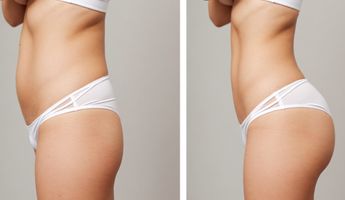
Find the best clinics for Fat Transfer in Phuket
With Medijump you can browse 1 facilities offering Fat Transfer procedures in Phuket. The cheapest price available is $167 in Nonthaburi
Fat Transfer in Thailand
Price: $ 167
Fat Transfer in Nonthaburi
Price: $ 167
Fat Transfer in Bangkok
Price: $ 834
Thailand offers the best prices Worldwide
Price: $ 167
From 7 verified reviews
Brooke Coulter, 09 April 2022
My husband had 2 moles removed and it was a fab experience. Friendly, clean, calm service with a super price. So very happy we booked with Phibeauty.
Compare Before & After Photos of _procedure_photos.phpFat Transfer
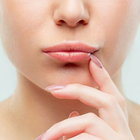
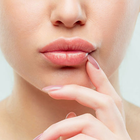
Front view
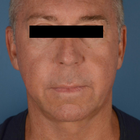
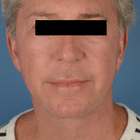
Front view
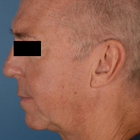
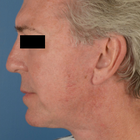
Full-side view
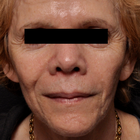
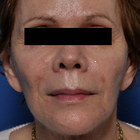
Front view
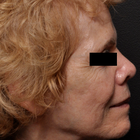
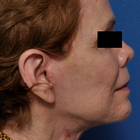
Full-side view
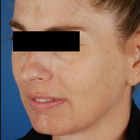

Half-side view
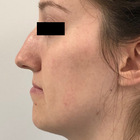
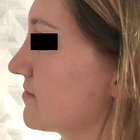
Full-side view
WHY US?
At Medijump, we're making medical easy. You can search, compare, discuss, and book your medical all in one place. We open the door to the best medical providers worldwide, saving you time and energy along the way, and it's all for FREE, no hidden fees, and no price markups guaranteed. So what are you waiting for?

Free

Best Price

Widest Selection

Risk-Free
What you need to know about Fat Transfer in Phuket
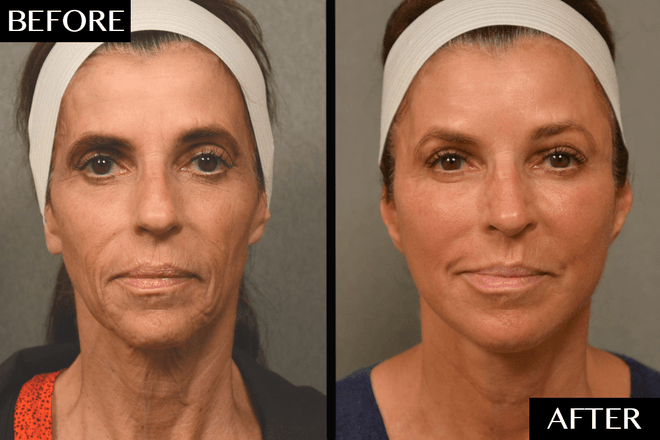
Also known as Fat Harvesting, Fat Grafting, Fat Injections, Lipofilling, Fat Transfer is a cosmetic surgery involving the movement of fat from one part of the body to another. During this procedure, your own fat will be used to fill in irregularities and grooves, primarily in the face, around the temples, eyes, chin, and lips. It can also be used to enhance the appearance of the breast, feet, hips, buttocks, and hands. The procedure is now a well-established technique that was perfected in the early nineties.
Some of the most common aesthetic indications for undergoing fat transfer / lipofilling include sunken cheeks, the disappearance of fat from the cheekbones, deep grooves running from the nose to the corners of the mouth, and in some instances of lines between the lower eyelids and the cheek. It is also one of the most common methods used for lip enhancement. In addition, lipofilling can be used to smooth out all types of irregularities such as those resulting from poorly performed liposuction or injuries.
The necessary fat is obtained by a limited liposculpture through one or several 3 to 5 mm incisions. It is normally taken from the abdomen or inner thigh. The aspirated fat is processed by centrifuging, filtering or rinsing. Pure liquid fatty tissue ready for injection is the result. The fat is then injected where needed. The fat is evenly distributed into the area by injecting minute amounts in the tissues so that the injected fat is well surrounded by healthy tissue. This ensures that the transplanted fat remains in contact with the surrounding tissues that must supply it with oxygen and nutrients.
What is the cost of Fat Transfer in Phuket?
Being aware of the costs linked to the Fat Transfer pricing in Phuket is vital for efficient budgeting and organizing. Pricing can differ greatly conditional to numerous things, such as the intricacies of the operation, the quantity of fat transferred, the surgeon's skill level, and the clinic's place. Conducting meticulous research and obtaining diverse quotations from multiple providers before settling is advisable.
Bear in mind, the Fat Transfer is generally deemed a vanity procedure, thus, it is not typically insured by health insurance providers. Exceptions may exist if the operation holds a medical necessity, like reconstruction operations post-mastectomy or injury. It's always advantageous to liaise with your insurance provider to grasp the specific details of your coverage and to ascertain the possible out-of-pocket expenses you could face.
What does a Fat Transfer Procedure Involve?
Consisting of two completely different procedures, extraction of fat called liposuction and transfer of fat through injections. Both the donor and recipient sites are sedated by giving local anesthesia. After this, fat is harvested through injections from the sites where adipocytes are tightly packed, such as the buttocks or abdomen. However, the fat present in lateral sides of the thighs and lower abdomen is also good fat as it contains a larger concentration of adipose-derived stem cells. These stem cells promote angiogenesis and adipogenesis at the recipient site - multiple injections are used to do this.
The material extracted is centrifuged, sedimented and filtered for excessive liquid and pure fat cells are injected just below the skin. This is the most difficult step of fat transfer to inject fat evenly in different layers of recipient tissue. Cannulas and syringes of different sizes are used to do this. In the case of breast augmentation, multiple fat injections are applied to the breasts. It is ensured that these fat cells are injected near a blood vessel so the cells don't die due to a lack of nutrition. Proper nutrition is needed for the cells to survive and grow.
What are the types of Fat Transfer?
Facial fat transfer: If you have facial creases, such as laugh lines, smile lines, and crow’s-feet, fat can be removed from your abdomen, thighs, or other areas and be injected into your face. Acne scars and sunken areas of the face, lips, and cheeks can also be filled in. Your plastic surgeon can even use grafted fat to minimize lines between your nose and mouth, correct skin depressions or indentations and minimize forehead wrinkles. (Facelift, Lip Augmentation)
Breast augmentation: Fat transfer breast augmentation essentially uses liposuction to take fat from other parts of your body and inject it into your breasts. This is a breast augmentation option for women who are looking for a relatively small increase in breast size and would prefer natural results.
Breast implants plus fat grafting: If your breast shape needs optimizing during a breast implant procedure, fat grafting can be useful. If you have residual breast irregularities after undergoing breast augmentation with implants, the irregularities can be filled in with fat to produce a smooth contour and an optimal shape.
Breast reconstruction with fat grafting: If you have breast defects following lumpectomy for breast cancer, fat grafting is an effective method for filling in these defects. Fat grafting is also an option for total breast reconstruction following mastectomy; however, to achieve sufficient breast volume, this is usually a multistage process that requires at least two to four sequential fat grafting procedures.
Buttock augmentation with fat grafting: Many people who desire a fuller, more rounded buttock will opt for a “Brazilian butt lift” which uses fat transfer to provide a more curvaceous buttock without the use of an implant. Liposuction is commonly used to both sculpt the surrounding area and collect the autologous fat to be injected.
Hand rejuvenation with fat grafting: Fat grafting into your hands is effective for adding volume, “plumping up” wrinkled areas, covering underlying vessels and tendons and improving the quality of your skin over time.
How Long Should I Stay in Phuket for a Fat Transfer Procedure?
As an outpatient procedure, just a couple of hours are needed depending upon the amount of fat that is to be removed and transferred. You can leave the hospital on the same day or sometimes an overnight stay is advised, and in some cases, more than one session is needed. You should stay in Phuket for at least 10-14 days after being discharged for regular check-ups. During this period, your health and results of the procedure are monitored by your surgeon.
The precise duration of your visit will primarily hinge on your personal situation, including the scope of your surgery, your total health condition, and your body's healing capability. It is always wise to engage in open dialogue with your surgeon about the anticipated period of your stay.
What's the Recovery Time for Fat Transfer Procedures in Phuket?
The recovery period is different for different areas of your body. After a buttock augmentation, you have to sleep on your stomach or keep standing for at least 4 weeks. Because sitting can dissipate the fat. The shape of the augmented area might appear irregular initially, it will get a proper contour after some time. There will be moderate swelling and bruising at both the donor and the recipient sites for 2 weeks. Your face might appear fat and plump after fat grafting but it will settle down before long. You might suffer from moderate pain for a few days. Pain killers are given to deal with this. Almost 6 months are required for the results to fully show.
What sort of Aftercare is Required for Fat Transfer Procedures in Phuket?
Things to consider:
- Regular checkups after being discharged.
- Take your medicines regularly, as and when prescribed by the doctor. Avoid self-medication.
- Follow a healthy diet plan for a better recovery.
- Ensure the presence of a friend or family member with you in the early few days to help you with house chores.
- Avoid excessive movement during the early few weeks and do not sit on your butts in case of butt fat transfer because it can dissipate the fat rendering it ineffective.
- Look for the signs of blood clot formation, excessive bruising, etc. Visit your doctor immediately if you find any abnormal thing.
What's the Success Rate of Fat Transfer Procedures in Phuket?
When exploring any health-related process, the success ratio becomes a key element to consider. The efficiency of the Fat Transfer in Phuket hinges upon various aspects such as proficiency and expertise of the surgeon, the health condition of the individual, and compliance to the guidelines of care after the operation. Fat transfer has been gaining fame due to its dual advantage of eliminating unnecessary fat from the body and accentuating preferred areas.
The outcomes of Fat Transfer show promising persistency. Many people have enjoyed pleasing results that lasted for a long span of time. Fat transfer for breast augmentation has increased by 76% in 2016 while for butt augmentation, a 26% increase has been witnessed. This approach also enjoys a commendable success ratio when it comes to patient satisfaction, with some researches revealing satisfaction percentages reaching up to 85%. It's however crucial to hold realistic anticipations, since factors like age, weight changes, and general health can sway the results. Regular consultations with your health provider are crucial for monitoring improvements and promptly dealing with any arising issues.
Are there Alternatives to Fat Transfer Procedures in Phuket?
Fat grafting is an expensive technique as it consists of 2 different procedures. Following are some alternatives to it:
- Dermal fillers: these are given through injections to make your skin look plump. Sunken cheeks can be effectively corrected through this technique.
- Breast implants: for small breasts, implants are an alternative to fat grafting. A silicone implant is inserted into your breasts to increase their size.
- Breast reconstruction: cancer patients, who went through mastectomy can get their bust back by reconstructive surgery.
- Tummy tuck: This procedure tightens your abdominal muscles giving them a tighter and flattened appearance.
- Liposuction: excessive fat is removed from different parts of your body through liposuction. Your tummy looks flatter and you look smarter after this procedure.
- Cheek augmentation: in this technique, silicone implants are inserted into your cheeks to make them look bigger and plump.
All of the techniques mentioned above involve only one procedure.
What Should You Expect Before and After the Procedure
Understanding the process before and after undergoing the Fat Transfer is crucial to easing worries and ensuring a successful outcome. Before the process, your doctor will provide in-depth guidance on the requisite preparations. This might involve abstaining from certain drugs or supplements that may increase bleeding, and possibly, fasting if general anesthesia is planned. Thorough medical check-up and health evaluation will be performed to lower any prospective risks. In particular instances, your doctor may advocate lifestyle alterations such as quitting smoking because it can hinder the recovery process.
Following the Fat Transfer, patients might have minor swelling and bruising, but these usually recede in a few weeks. Aches and discomfort can be effectively controlled with prescribed medicine. Though recovery time varies among individuals, most return to work and resume everyday activities within one to two weeks. Your doctor will provide detailed instructions for a post-procedure care routine, possibly involving wearing pressure garments and regular review meetings to track healing and progress.
What are Potential Risks of Fat Transfer?
Possible complications can include:
- Blood clot formation, infections, and ulmonary embolism leading to the failure of fat grafting
- Absorption of the transferred fat by the body leading to asymmetry or irregularities in the treated area
- The formation of oil cysts or calcification which can interfere with radiological imaging
Whilst the information presented here has been accurately sourced and verified by a medical professional for its accuracy, it is still advised to consult with your doctor before pursuing a medical treatment at one of the listed medical providers
No Time?
Tell us what you're looking for and we'll reachout to the top clinics all at once
Enquire Now

Popular Procedures in Phuket
Prices Start From $26

Prices Start From $113

Prices Start From $208

Prices Start From $275

Prices Start From $758

Prices Start From $5

Recommended Medical Centers in Phuket for Fat Transfer

- Interpreter services
- Translation service
- Religious facilities
- Medical records transfer
- Medical travel insurance
- Health insurance coordination
- TV in the room
- Safe in the room
- Phone in the room
- Private rooms for patients available

- Interpreter services
- Translation service
- Religious facilities
- Medical records transfer
- Medical travel insurance
- Health insurance coordination
- TV in the room
- Safe in the room
- Phone in the room
- Private rooms for patients available

- Interpreter services
- Translation service
- Religious facilities
- Medical records transfer
- Medical travel insurance
- Health insurance coordination
- TV in the room
- Safe in the room
- Phone in the room
- Private rooms for patients available

- Interpreter services
- Translation service
- Religious facilities
- Medical records transfer
- Medical travel insurance
- Health insurance coordination
- TV in the room
- Safe in the room
- Phone in the room
- Private rooms for patients available

- Interpreter services
- Translation service
- Religious facilities
- Medical records transfer
- Medical travel insurance
- Health insurance coordination
- TV in the room
- Safe in the room
- Phone in the room
- Private rooms for patients available

- Interpreter services
- Translation service
- Religious facilities
- Medical records transfer
- Medical travel insurance
- Health insurance coordination
- TV in the room
- Safe in the room
- Phone in the room
- Private rooms for patients available

- Interpreter services
- Translation service
- Religious facilities
- Medical records transfer
- Medical travel insurance
- Health insurance coordination
- TV in the room
- Safe in the room
- Phone in the room
- Private rooms for patients available

- Interpreter services
- Translation service
- Religious facilities
- Medical records transfer
- Medical travel insurance
- Health insurance coordination
- TV in the room
- Safe in the room
- Phone in the room
- Private rooms for patients available

- Interpreter services
- Translation service
- Religious facilities
- Medical records transfer
- Medical travel insurance
- Health insurance coordination
- TV in the room
- Safe in the room
- Phone in the room
- Private rooms for patients available

- Interpreter services
- Translation service
- Religious facilities
- Medical records transfer
- Medical travel insurance
- Health insurance coordination
- TV in the room
- Safe in the room
- Phone in the room
- Private rooms for patients available
Fat Transfer in and around Phuket
About Phuket
Phuket, Thailand’s largest island nestles in the Andaman Sea. The island is an incredible blend of beautiful beaches, lush green hills, mangroves and rainforests. The tin mining industry has been the major contributor to its economy since the 16th century. However, In recent years, the tourism industry and rubber production have developed as major industries which contribute to the economy.
But beyond its breathtaking beaches and sceneries, Phuket also boasts an exceptional infrastructure, including advanced property development and luxurious hotels and shopping malls, catering to the needs of every visitor. It offers a plethora of recreational and entertainment options to everyone willing to enjoy its beauty and ambience.
Phuket has quickly become a preferred destination for medical tourists worldwide due to the unparalleled quality and affordability of its healthcare services. Whether it's critical life-saving procedures or elective cosmetic surgeries, the medical care provided in this city is commendable. A significant factor in Phuket's appeal is the comparative cost efficiency - the expense of dental and cosmetic treatments, in conjunction with the costs of travel and accommodation, is significantly lower than similar expenditures in numerous other countries.
Furthermore, the exceptional aftercare services in Phuket are a key component of the fully-rounded healthcare experience. Patients receive top-notch care and attention during their recovery process, enabling quicker recuperation and return to health. In this wellness-centered environment, patients are both physically replenished and mentally rejuvenated in the tranquil, picturesque settings of Phuket.
The medical tourism sector in Phuket is also buoyed by the introduction of attractive and competitive all-inclusive packages offered by numerous medical tourism agencies. These packages ingeniously integrate health and holiday elements, affording medical tourists the chance to recover and relax simultaneously. Tourists are thus afforded the opportunity to enjoy Phuket’s awe-inspiring landscapes and leisure offerings even as they benefit from top-tier medical treatments.
Maintaining its high standards in healthcare, Phuket houses two of the region's top-ranking private hospitals - the Phuket International Hospital and the Bangkok Hospital Phuket. These institutions are renowned for their state-of-the-art medical facilities and services, and their proficient English-speaking doctors. Highly recommended for a range of procedures including Cosmetic Surgery, Lasik Laser Surgery, and dental treatments, they guarantee an excellent standard of care and professionalism.
Popular Areas in Phuket
For a truly immersive Thai experience, one can opt for a walking tour through the heart of Phuket town. On your journey, you will be charmed by the robust impression of the Sino-Portuguese houses, shophouses, and opulent mansions. This architectural splendour is a vivid testament to the Chinese and Portuguese influence that has shaped the island's identity since the 16th century.
In the next phase of the tour, you will traverse the meandering streets, where each corner beckons with a tale of its own. As you further explore the town, you'll see local shops selling traditional Thai goods, bustling markets brimming with fresh local produce, and small family-run restaurants serving authentic, scrumptious Thai cuisine. Each stop underscores the rich, cultural tapestry of Phuket and its unique blend of Thai, Chinese, and Portuguese cultures - a melting pot that has been simmering since the 16th century. It's more than just a tour; it's a delightful plunge into the vibrant history and palpable heritage of Phuket.
For a complete holiday feel, you can visit the numerous small islands around Phuket and visit Phang Nga Bay as it is a mesmerizing site with limestone cliffs jutting out of the turquoise blue waters. You can also try sea canoeing, as many grottoes are accessible only by canoes. Phang Nga Bay is home to the now-famous James Bond Island with its iconic large leaning rock. Patong Beach is the most popular beach resort on the island and is always full of people as the town is bustling with activity and hosts many bars, discos and restaurants serving International cuisine.
Imbued with a profound Buddhist legacy, the island of Phuket is dotted with an abundance of quaint Buddhist temples, each boasting its distinct charm. Standing proudly amongst them all is the illustrious "Big Buddha." This awe-inspiring marble statue graces the peak of a hill and captures the onlooker's attention with its towering stature of 150 feet in height and 85 feet in width, poignantly portraying Gautama Buddha in a serene sitting position.
As you draw closer, the Big Buddha’s elevated location offers panoramic views of Phuket that are genuinely unrivalled – a mélange of the blue-green sea, unbroken stretches of sandy beaches, and the verdant green of the island’s lush hilltops. It’s not just the scale of the statue that captivates visitors, but the soul-soothing tranquillity that pervades the area. Every detail, from the rhythmic chants that resonate through the air to the soft whispers of the winds, adds a spiritual depth to the site. Whether you're a follower of Buddhism or simply a traveller curious to explore, the towering Big Buddha invites you to contemplate the interconnectedness of life and nature, honouring the philosophical principles of Buddhism.
You will not be short of things to do as Phuket has many more islands, museums, the Khao Phra National Park and the Tiger Kingdom to visit.
Weather and Climate in Phuket
Phuket experiences a predominantly tropical climate wherein it's usually hot and humid for most parts of the year. The temperature consistently hovers at a high average of approximately 86 degrees Fahrenheit, making it an ideal destination for sun-seekers.
However, there is a welcome respite during the dry season, which spans from December to March. During this period, temperatures and humidity levels take a slight dip, becoming more agreeable and comfortable, making it the most popular time for tourists. Occasional brief showers may occur, but they do little to interrupt the enjoyment of the tropical paradise. Meanwhile, the southwest monsoon introduces the rainy season from May through to October. At this time, the island is subject to an average rainfall of around 87 inches, with the heaviest deluge typically occurring in May and the September-October timeframe.
Despite the precipitation, this period also offers its unique charm to visitors. The rains bring about a different kind of beauty to the island, with lush greenery awash with life and spectacular waterfalls seen in their full glory. Indeed, the rainy season can be an ideal time for those seeking fewer crowds, more solitude, and the chance to experience a more lyrical and poetic side of Phuket's tropical charm.
Getting Around in Phuket
Phuket International Airport is located north of the island and there are many frequent flights to and from Bangkok and other regional airports like Singapore and Kuala Lumpur. Seasonal flights operate from major cities in Europe and Australia, during peak tourist season.
Phuket International Airport has services from major International airlines such as Singapore Airlines, Cathay Pacific, Emirates, Qantas, Etihad, Air China, and Edelweiss Air.
For domestic travel, Nok Air, Thai Air Asia, Orient Thai, and Thai Lion Air operate flights from the domestic terminal of the airport.
Once you land in Phuket, there are many transport options available to you and you can take the Municipal air-con airport bus to Phuket Town bus terminal 1 for 100 Bahts. There’s also the airport shuttle to Patong Beach for 120 Bahts. Phuket smart bus is another service that operates to various islands at a fixed rate of 170 Bahts. The other option is the Minibus services, which operate every time a flight arrives. They charge between 100-200 Bahts.
You can also hire metered taxis from outside the airport. The average fare starts from 400 Bahts with an extra surcharge of 100 Bahts. You can also reach Phuket from Bangkok by private car. The Sarasin Bridge connects Phuket Island to the mainland.
To move around the island, you will need some mode of transport. Public and private bus services are available from the two bus terminals in Phuket. Long distance buses operate from the new terminal but these only connect Phuket Town to the beach towns.
In Phuket, reliable means of navigation around the beautiful island consist of tuk-tuks and taxis. Of these, the minivan-like tuk-tuks or Songtaews, distinguishable by their distinct red colour, are immensely popular. However, as these vehicles do not have meters, agreeing on the fare before beginning the journey is advisable.
On the other hand, metered taxis often turn out to be a less expensive choice compared to tuk-tuks. Despite this, during peak traffic hours, drivers often switch to flat rates. For reliable and reasonable fares, opt for taxi services associated with your hotel. Other alternatives to exploring the island include rental bikes, motorbike taxis, and traditional longtail boats, each offering a unique perspective of the stunning landscape.
Tourist Visas in Phuket
International tourists travelling to Phuket and other parts of Thailand must have a passport which is valid for at least six months over and above their period of stay.
On the other hand, Effective September 25, 2023, Thailand has granted a temporary tourist visa exemption to passport holders of the People's Republic of China and the Republic of Kazakhstan. This visa exemption is valid until February 29, 2024. Also, Thailand has announced that it will be launching a new visa program for long-term visitors starting from October 1, 2023. The new visa program will allow visitors to stay in Thailand for up to 10 years.
Thailand provides tourist visa exemption to the nationals of 48 countries, which include Australia, the USA, Japan, and New Zealand. Under the exemption policy, they can stay in the country for not more than 30 days during each visit. However, passport holders of 28 countries which include India and Russia need to get a visa on arrival. You can get a tourist visa on arrival at the immigration checkpoints for a period not exceeding 15 days.
If you are required to apply for a Thailand visa, you can do so at a Thai embassy or consulate in your home country. You can also apply for a visa online through the Thai eVisa website.
When applying for a Thailand visa, you will need to provide the following documents:
- A valid passport
- A visa application form
- A passport photo
- Proof of onward travel
- Proof of financial support
Additional Information
- Thai is the official language of Phuket and is widely spoken on the island. However, you can manage with English in the main parts of the city and the tourist areas.
- Thai Baht is the currency of exchange in Phuket. As of late 2023, one US dollar is worth about 36.94 baht. You can, of course, use debit and credit cards anywhere in Phuket.
- Many of the major banks have their branches in Phuket Town and Patong. You can find ATMs in all shopping and tourist areas and in Seven-Eleven stores. Almost all currency exchange booths also offer an ATM service.
- Buddhism is the major religion in Phuket. However, you can find many Muslims too, who constitute about 20 percent of its population.
- Thai people are very friendly and forgiving and understand that visitors are not very aware of their customs and culture.
- The Royal family is held in the highest esteem. It’s a criminal offence to criticize them in public.
- Thailand follows the lunar calendar. Hence, religious holidays fall on different dates every year. Some important holidays in 2019 are Makha Bucha (19th Feb), Songkran Festival (12-16th April), H.M. King’s Coronation (6th May), Visakha Bucha (20th May), Queen Sirikit’s Birthday (Mother’s Day 12th August), Commemoration of King Bhumibol (5th December) and Constitution Day (10th December).
- Thai people are known for their warm hospitality and friendly nature. It is customary to greet people with a "wai" (a slight bow with the hands clasped together in front of the chest). It is also important to be modest in your dress and behaviour, especially when visiting temples and other religious sites.
Popular Searches
- Plastic Surgery in Thailand
- Dental Implants in Thailand
- Hair Transplant in Thailand
- Breast Augmentation Thailand
- Gastric Sleeve in Thailand
- Gender Reassignment Surgery in Thailand
- Laser Hair Removal in Bangkok
- Botox in Bangkok
- Dermatology in Bangkok
- Breast Augmentation in Bangkok
- Coolsculpting in Bangkok
- Veneers in Turkey
- Hair Transplant in Turkey
- Rhinoplasty in Turkey
- Stem Cell Therapy in Mexico
- Rhinoplasty in Mexico
- Liposuction in Mexico
- Coolsculpting in Tijuana
- Rhinoplasty in Korea
- Scar Removal in Korea
- Gastric Sleeve in Turkey
- Bone Marrow Transplant in India
- Invisalign in Malaysia
- Plastic Surgery in the Dominican Republic
- Tummy Tuck in the Dominican Republic
- Plastic and Cosmetic Surgery in Poland
- Rhinoplasty in Poland
- Hair Implant in Poland
- Dental Implants in Poland
- IVF in Turkey
